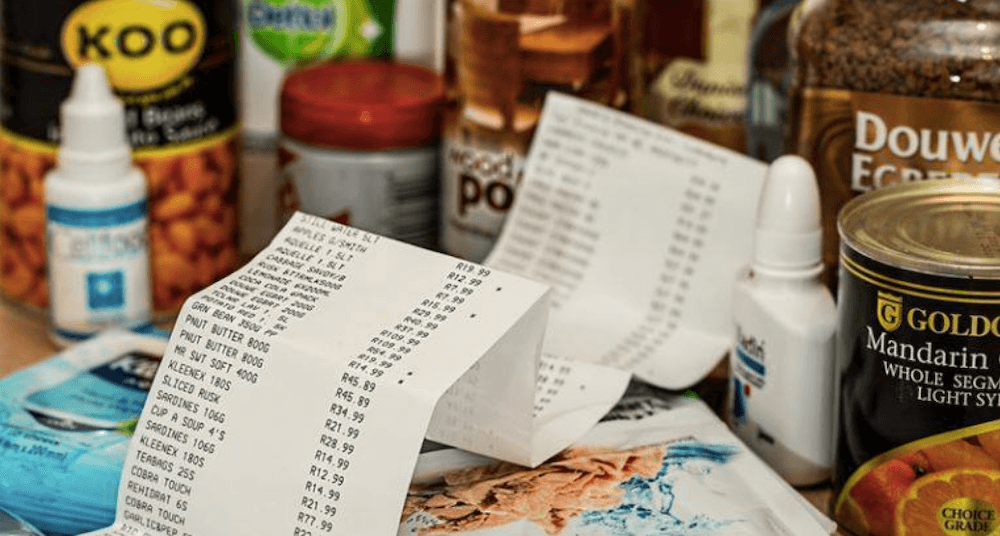ImpactAlpha, September 15 – There’s no shortage of capital for global small business lending. What have blocked small businesses from access to working capital, inventory financing and other lending are broken or inefficient distribution channels for such financial services.
EcoEconomic development efforts have long focused on banks, microfinance institutions and other financial services providers, to limited effect. By some estimates, small businesses in emerging markets face a $5 trillion financing gap.
A new wave of startups is coming at the problem from a different direction: enterprise tech.
The COVID pandemic and associated shutdowns has accelerated the digitization of small businesses worldwide, down to the kiosk owners and mom and pop shops that act as the main distribution channel for the majority of consumer goods and food staples in emerging markets.
B-to-small-B enterprise tech ventures like MarketForce and Sokowatch in Kenya, Boost and KudiGo in Ghana, and Kirana247 in India are applying technology to fix market failures and inefficiencies, starting with logistics and inventory management. The troves of data the tech providers are collecting on shop owners’ sales, performance and growth is opening up previously restricted sources of working capital, inventory financing and other lending.
“The premise is that this is an on-ramp to financial inclusion, because using the digital data collected, you can offer credit or other financial services,” says Maelis Carrarro of inclusive tech accelerator Catalyst Fund, which supports enterprise tech and e-commerce startups through its Ghana-focused Inclusive Digital Commerce Accelerator. Catalyst Fund has backed logistics tech venture Boost and mobile-based business tools provider KudiGo as well as other enterprise tech solutions in South Africa and Nigeria.
That is making “financial inclusion” a key value-proposition for enterprise technology providers, even if financial inclusion wasn’t the primary problem they set out to solve. Among their customers’ biggest pain points: Inadequate channels of affordable, efficient and appropriate financing
The other 90%
MarketForce operates a business-to-business marketplace to help informal and small retailers in Kenya procure food products and other essentials for their shops. It tracks the businesses’ ordering and sales history, and provides that data to its financial partner Pezesha, which in turn connects small businesses to financial services firms offering affordable working capital.
“There’s clearly a huge business opportunity there,” says MarketForce’s Tesh Mbaabu. An estimated 90% of consumer spending happens at mom and pop stores across the African continent. “But no one is willing to give them loans because their book-keeping isn’t digitized, so they’re perceived to be high-risk because they don’t have any data.”
Mbaabu’s original focus was on large companies, not mom-and-pop shops. But the market was too competitive, so he “started targeting the same sort of digitalization tools for the majority of businesses that don’t have any form of automation.” The company has enrolled 25,000 merchants across Kenya onto its platform since launching in 2018. About half are regular users.
In June, MarketForce acquired another enterprise tech provider, DigiDuka, to enable small businesses to offer digital payments and financial services, like selling airtime and collecting utility bill payments, to expand their revenue streams.
MarketForces’ shopkeeper data made clear the impact of small business owners’ exclusion from financial services on their growth and financial security.
“No bank focuses on this level of business,” says Mbaabu. “These are very low-margin businesses so any money they were earning they used for upkeep, and to live off of. They were not really making enough to capitalize the business and grow from a small shop to a minimart, for example.”
MarketForce’s partnership with Pezesha helps shopkeepers secure financing to expand their stock range from basic consumer goods staples to fresh foods and higher-margin products like solar lanterns.
“What’s innovative about Pezesha’s model is they offer embedded finance, meaning they find distribution channels for capital that traditional players wouldn’t go for,” explains Mbaabu. “So they’re able to partner with banks and large lenders, take their capital, and use technology and technology partners like MarketForce to distribute it.”
Market efficiencies
Few mainstream financial services firms have thrown their weight behind enterprise tech to capitalize on the small business financial inclusion opportunity.
They will, though. The trickle of significant deals includes Stripe’s $200 million acquisition of Nigerian digital payments company Paystack last October, and Visa’s partnership with Ghanian SMS-based e-commerce platform Hubtel in April.
For now, enterprise tech and fintech ventures largely have to rely on their own capital reserves, or rare sources of affordable debt capital like Lendable, a London-based lender for tech-enabled ventures serving low-income and women borrowers.
Startups aren’t waiting around. In India, Kirana247 is unlocking small business capital simply by making the movement of goods work better for shopkeepers.
India’s roughly 13 million corner shops, called kiranas, handle as much as 85% of grocery sales in the country. Delhi-based Kirana247 launched in 2018 with a mission of overhauling how “the most efficient last-mile providers in the country and the lowest-cost operators,” procure stock, explains co-founder Tarun Jiwarajka.
“Nobody has been able to crack this black box open,” he says. “Grocery retail in India is a $600 billion market—it’s going to reach $1 trillion. How many markets or business segments have $1 trillion in revenue riding on them?”
Until recently, local distributors and agents have managed the flow of consumer goods from companies like Unilever and CocaCola, supplying products to shopowners on a fixed weekly or biweekly schedule. This model puts pressure on shopowners to have both the capital and physical space on hand to buy a week’s worth of inventory at a time.
“They have to adapt to how distributors function over what their businesses actually need,” says Jiwarajka.
Kirana247 is a tech-based logistics company that allows kirana owners to order and pay for stock day-to-day through its digital platform, cutting out distributors altogether. It works with consumer goods companies directly to procure inventory, stores it in local warehouses, then shuttles the goods to shopkeepers’ front door.
The company just raised $1 million in early financing to build more warehouses, which will allow it to onboard “thousands” more kiranas. Jiwarajka acknowledges that its physical footprint makes Kirana247’s model more capital intensive than purely software-based enterprise solutions, but says the sheer scale of the opportunity makes it a no-brainer.
“Because our warehousing model is closer to them, it means they can get products daily and they don’t have to overstock anymore,” Jiwarajka explains. That frees up capital and space to offer a wider range of stock that better serves consumer demand and ultimately drives more revenue.
Fast-moving consumer goods
Kenya’s Sokowatch goes a step further, offering business owners small lines of credit from its own supply-chain financing.
The eight-year-old company, a relative enterprise tech veteran, got its start by offering informal shopkeepers online ordering and reliable delivery of stock from consumer goods companies. Founder Daniel Yu explains that unlike in India, most African shopowners aren’t served by distributors. Instead, they have to shop for their inventory each day from local markets.
“The opportunity at the B2B level is being able to aggregate their buying power—that’s huge,” says Yu. The company has 30,000 shopkeepers in Kenya, Uganda, Tanzania and Rwanda using its platform each month.
Sokowatch now also offers its regular users’ with small lines of credit to help them meet “unmet demand from the community to buy goods in bigger volumes than what shopkeepers can provide with the limited working capital they have,” Yu adds.
Sokowatch allows shopkeepers to buy $100 to $200 in goods at a time, and then repay Sokowatch once the products are sold. Yu says most repay within a week.
Sokowatch finances the credit itself, which it’s able to do because of its own 30-day supply-chain financing terms from consumer goods companies. “We get advanced payment terms from most of our suppliers, like Unilever, so if one of our customers pays us back in a week, it doesn’t actually affect the working capital cycle for us,” explains Yu. “That’s why we’ve been able to do this in a pretty capital-efficient way.”
Proof points
Enterprise tech ventures are having a moment with early-stage venture capital funds; ImpactAlpha reports multiple new funding rounds each week.
Most of the models are still nascent and highly experimental, says Catalyst Fund’s Carrarro. “All of these models need to have a large number of digital interactions before they can actually monetize their core value proposition. They need to have a lot of traction before they can add the real money-making propositions: better prices from FMCGs, or credit.”
Given that informal businesses have until recently been underserved by technology, gaining such traction requires dedicated resources for training users and cultivating behavior change.
Ghana-based Boost’s model depends on users who are accustomed to sourcing inventory manually getting comfortable with placing stock orders digitally. Customers of KudiGo, also in Ghana, have to get used to using an Android app for tracking sales and managing inventory. During the pandemic, the company developed an online “storefront mall,” to allow informal merchants to sell goods online, a first for most of them.
“There are definitely companies that have made it over the hump and are seeing a lot of growth – Sokowatch, for example,” Carrarro observes. Such examples give investors and other potential partners, like financial services firms, a sense of the opportunity and what data points signal business model viability and impact.
“We’re tracking customer-level increases in sales volumes and revenues and access to better prices – which means lower costs for their businesses – and whether this actually leads to more personal and business savings or investments in growing the business,” she says. That kind of data speaks to the business owners’ resilience, she adds, “and come from having a more stable business.”











